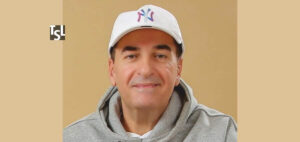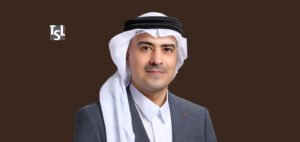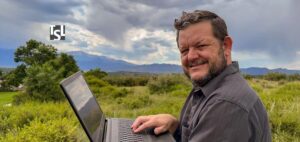Transforming Science Education!
In the education realm, the field of science education stands out for its pivotal role in shaping young minds. With a focus on fostering curiosity, critical thinking, and innovation, science educators play a crucial part in preparing the next generation of scientists and innovators. This field not only imparts knowledge but also cultivates a deep appreciation for the scientific method and its application in real-world scenarios, setting the stage for future advancements and discoveries.
At the forefront of reforming science education is an esteemed figure, Victoria Schulman, renowned for her dedication to fostering a love for science among students. Serving as the Director of Science Research & Science Faculty at King School, her journey is marked by a passion for both teaching and mentorship. With a background steeped in academic excellence and research, Victoria brings a wealth of experience to her role, inspiring students to reach new heights in scientific exploration.
Nestled within the prestigious halls of King School, Victoria leads by example, driving innovative initiatives that redefine traditional classroom paradigms. Her pioneering efforts in blending active learning methodologies have gathered acclaim, moving students towards a deeper understanding of scientific principles through hands-on experiences. By creating an environment where students are actively engaged in the scientific process, Victoria fosters a culture of inquiry, empowerment, and lifelong learning.
Step in to discover more about Victoria Schulman’s journey in science education:
Transitioning from Biomedical Research to K–12 Education
Victoria spent her entire educational career pursuing the highest level of science. She earned her Bachelor of Science (B.S.) degree from the University of Maryland in College Park, MD, USA. Then, she earned her Ph.D. in Biomedical Sciences from Weill Cornell Medical College in New York, NY, USA. From there, she completed her postdoctoral fellowship at Yale University School of Medicine in New Haven, CT, USA.
After two years at Yale, she brought her first child (her son) into the world, and the demands of the job were not conducive to raising her family. This forced her to reconsider her career ambitions because she wanted to be present for her family. After much thought, she realized that the times she loved the most in the research field were the moments when she was mentoring younger high school, undergraduate, and graduate students in the lab and seeing them shine. As such, teaching became a viable option to consider as a new career path.
She secured her role at King School, an elite private K–12 school in Stamford, CT, USA. She was specifically hired to teach Biology and Chemistry in the upper school (grades 9–12). However, in her first year at King School, they asked her to bring a research program to the school. This was something the institution had never done before, and she was tasked with building a robust and successful program from the ground up.
This was no easy feat, but she built it, and now it is very successful, and participation in this program is highly coveted and sought after. After six years in operation, this is now the third year in a row where she has coached a student in her science research program up to the International Science & Engineering Fair (ISEF). Ironically, all three students in their respective years of competing (2022, 2023, & 2024) placed third at ISEF, receiving global recognition for not only themselves but also for Victoria’s research program.
Others are envious, as these accolades help the students matriculate at top colleges and universities and launch their professional careers. Others now come to King School specifically to enroll in her program. Seeing her students succeed is what drives her to keep tweaking the program to make it better and more successful each year.
Revolutionizing Science Education through Active Learning
A few years ago, during the COVID-19 pandemic, Victoria discovered The Modern Classrooms Project, which is a new, progressive way of teaching. This approach allows for self-paced learning, wherein all the lecture material is contained within concise videos that the students watch on their own. She took pieces of this approach to teaching and merged it with the concept of a Flipped Classroom, wherein students learn the material at home on their own and work on “homework” in class with the teacher, allowing them to ask questions when they get stuck.
By blending these two concepts of a Modern Classroom (with self-paced video lessons) and a Flipped Classroom (lecture videos at home; application of concepts in class), she now runs a classroom in which students spend most of their time practicing being actual scientists instead of listening to her talk about being a scientist in class.
This novel approach facilitates faster learning and greater retention of material because learning by “doing” is much more likely to stick than learning by listening or reading. Her students are always up and active in class, experimenting with something, challenging ideas, and demonstrating complex concepts.
In this way, they can move through advanced material more quickly, allowing them more time for independent investigations and projects that they can then either publish or compete with in local, state, regional, national, and international science fairs to earn recognition and accolades for their work.
Fostering Future Scientists
Whenever students ask Victoria a question that she doesn’t know the answer to, they are always stunned that she doesn’t know and stunned by her response: “I don’t know. Let’s figure it out.” Many students believe the fallacy that all teachers know everything, which couldn’t be further from the truth.
They say, “But you have a Ph.D., you must know everything,” to which she responds, “Having a Ph.D. doesn’t mean I know everything; it means I know how to figure out anything.” There is a key difference between knowing everything and knowing how to figure out everything. With a Ph.D., she has been trained to always use the scientific method to answer her questions.
Thus, when students ask her something they don’t know, she models for them how a true scientist would approach the problem, and they solve it together as a team. They learn together. This model guides her students and shows them how not to be afraid of the unknown and how not to be overwhelmed when facing challenges.
This boosts their confidence and teaches them how to break down big problems into smaller, more achievable steps. It also teaches them how to troubleshoot and take healthy risks when trying new things. All these intangible skills are crucial for becoming a leader on the cutting edge of scientific research.
Once students outgrow her in-house laboratory, she coaches them on how to interact with professional scientists and liaises internships in highly prestigious university labs where they can conduct more high-level research. For this process, students identify their interests, and a few laboratories focus on those interests. Then, she reaches out with the endorsement of those students and develops a relationship with the lab head. Once that is established, she liaises interviews between the lab heads and the students and coaches the students on how to succeed in an interview.
The interviewing skills that she instills in students are another intangible skill that is critical for their growth as young adults and will help them for years to come beyond high school. After the students have secured an internship and worked for the lab for an extended period, she then teaches the students about effective scientific communication. This includes formats such as slide presentations, oral presentations, poster presentations, and informal “elevator pitches.” Again, this training will help the students succeed not only in the immediate science fairs and research competitions to which they will ultimately apply but also in their professional careers, regardless of the field they choose to pursue.
A large part of the training is not just science but also the interpersonal skills that will allow them to put their best foot forward in any future endeavor.
Empowering Scientific Communication
Victoria founded Amino Group, LLC, in 2016 while she was still a fulltime biomedical researcher at Yale University School of Medicine to assist fellow non-native English speakers in getting their work published. Oftentimes, publishing companies and scientific journals will outright reject manuscripts that are too difficult to read due to incorrect grammar and language barriers.
She found herself spending a lot of time coaching those individuals on proper English mechanics, and she ultimately decided to turn that into a business so that she could be compensated for the immense amount of time that she was spending on those tasks.
After she shifted to teaching full-time, she expanded the scope of the Amino Group to include all forms of scientific communication, i.e., not just editing manuscripts for publication (which she still does) but also assisting those (both native and non-native English speakers) who need help composing presentations and strategically aligning their work with societal needs.
In doing so, those presentations are more well received and either win science research competitions or successfully secure grants and funding to continue pursuing those research projects.
By expanding the scope of the Amino Group’s purpose and mission, she is now able to help students from across the country, not just those in her hometown, secure high-level research internships and earn recognition and accolades for their work, which, in turn, helps launch their professional careers from a young age, giving them a selective advantage when it comes to matriculating in top colleges and universities.
Overcoming Hurdles in Scientific Communication
In her opinion, there are two main hurdles that all scientists must overcome to be successful:
First, the work must be communicated. Victoria always says, “If you have the cure for cancer but can’t communicate it to others, you do not have a life-saving discovery.” Being able to adequately and effectively communicate your data to another person or audience is critical, and you must be able to convey the same information in a variety of ways.
For example, the presentation about a new cancer therapeutic that she would give to an audience of fellow high-level researchers is very different from the presentation about the same topic that she would give to a group of nonscientific laypeople whose loved ones are currently suffering from cancer. Getting the “buy-in” from both of those audiences is key to success.
Second, in addition to clearly outlining your discovery, strategically positioning your data in the context of societal needs is critical for gaining funding for future studies, mass producing the discovery, and catching the interest of the public. This is the classic “Why should I care?” question. If a scientist can’t get others to care about their work, they will run out of funding and lose support for their research, and their work will cease, effectively ending their career.
So, clear communication and strategic alignment. Those are the two biggest hurdles that all scientists must overcome all the time and every time if they hope to succeed and/or make a name for themselves. Her company, Amino Group, LLC, helps with both of these challenges by providing corrections to English grammar and mechanics, suggestions for better flow of logic and critical reasoning in writing and/or presentation, recommendations for strategic positioning of the work in the context of current issues, and coaching for the development of presentation skills for a wide variety of formats and venues.
All these touchpoints provide her students and her clients with the business and interpersonal training they need but are often not taught in schools to be successful.
The Power of Engaging Education
There is an old Chinese proverb that says, “Tell me, and I will forget; involve me, and I will understand.” This notion is what sets exceptional science teachers apart from the rest. Traditional learning has always been more of a’sage on the stage’ approach where the teachers lecture, and the students listen and take notes.
It’s very transactional and impersonal, and it doesn’t engage students very well at all. Of course, in the sciences, there are lab activities that can be paired with a standard lecture to make it more engaging, but the best science educators will make every lesson engaging, not every other one, or only once per week.
With her blend of a Modern Classroom and a Flipped Classroom, every single class session is engaging. The students are up and out of their seats, doing something that complements the lessons that they studied the night before. They are always experiencing science instead of simply hearing or reading about it. If they are involved in science, they will more effectively learn science. Additionally, their ability to meet students on their level sets exceptional educators apart from others. Most students feel a natural separation of authority between students and teachers, but if teachers can befriend students and work more like teammates with the students, then a great working relationship can form in which the students trust the teacher instead of fearing the teacher.
That trust encourages students to take healthy risks and try new things that they might otherwise shy away from, and it’s these “new” things that can jumpstart their academic and professional careers. When Victoria tells her students that she doesn’t know the answer to a question they have and suggests that they figure it out together, that builds the trusting teammate relationship, and they feel safe in their lack of knowledge because they know she’s right there with them. It empowers them when she puts herself on their level and in their shoes, and when they solve it together, their confidence skyrockets. That’s the mark of an exceptional teacher.
Instilling Soft Skills for Future Success
Every adult has one teacher who makes a difference, and every kid is one caring teacher away from being an incredible success story. Victoria strives to be that teacher for as many students as possible. She wants to be the reason a student learns to love science, the reason a student realizes their potential, the reason a student is set up for success in college and their professional life, and the reason a student always remembers to believe in themselves. She hopes to instill all the soft skills—the interpersonal and intangible skills—that will allow students to thrive in any professional field they wish to pursue.
Keeping Pace with Progress
Victoria attends conferences to stay up to date on new trends and technologies. She particularly enjoys attending the Research Teachers’ Conference hosted by the Society for Science as well as the Education 2.0 Conference. Both conferences present new, cutting-edge techniques and approaches to both teaching and research. Additionally, the networking that she can do at these conferences’ benefits both her students’ prospects and her professional career.
A Guide for Educators
She advises aspiring educators, “Be to your students what you needed when you were their age.” Facilitate the opportunities for them that would have helped you, make the connections for them that would have helped you, have the patience for them that you needed from someone, be the inspiration for them that would have jumpstarted your goals and ambitions, and be the role model for them that you wished you had way back when to look up to. That is how you will best serve your students.
Discovering Hidden Talent
In her research program, although she does try to identify and target talent when she sees it, they also require every student to complete the beginning scientist courses and projects to ensure that every student has a chance to try their hand at the scientific method. Not only is this a graduation requirement, but it also ensures that students experience something that they might not have voluntarily pursued.
Sometimes, this yields students who go on to do amazing things in science, but they initially never thought they’d choose this route. This is a classic example of how sometimes students don’t know what options are available to them and requiring this experience for every 9th grader is a way to ensure that there is equal opportunity to pursue the sciences. It may not be for everyone, but everyone at least gets a chance to try, so no one misses out.
Shaping the Future
Victoria loves science, and she loves getting others to love science, too, particularly girls. She believes we need more women in STEM (Science, Technology, Engineering, and Mathematics) fields. Oftentimes, she feels that young students, particularly girls, don’t have the confidence to pursue the hard sciences. They are afraid of failing, afraid to try new things and not be perfect, and girls, specifically, are afraid of the intimidating male-dominated STEM fields; they feel like they don’t belong.
She wants to change this. She is driven by an intense desire to make these fields more accessible to all students, and she wants to serve as a model of hope for the girls. She wants them to see themselves in her and pursue their dreams, despite the naysayers.


